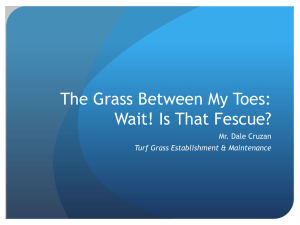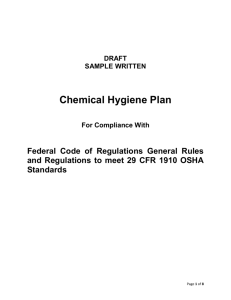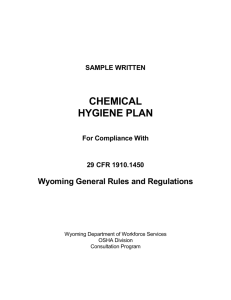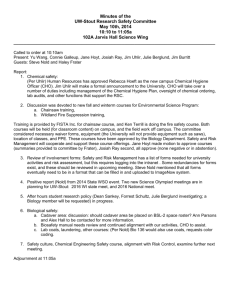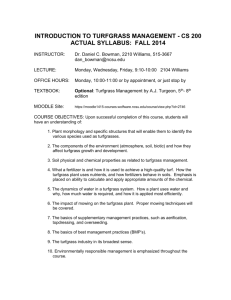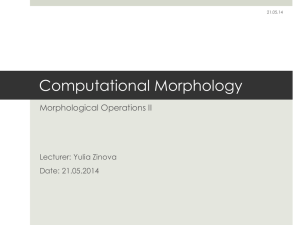Turf Physiology
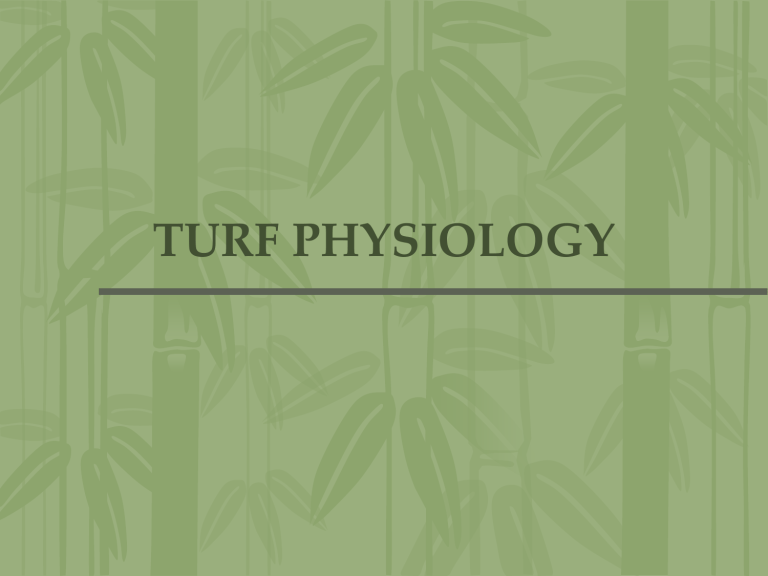
TURF PHYSIOLOGY
Photosynthesis
• 2-ranked leaf arrangement
• Chlorophyll gives green color
• Photosynthesis is process of using light to create carbohydrates (food)
Carbohydrates (CHO)
Excess CHO can be produced and stored
• Favorable conditions
• High mowing height
• Adequate N
Carbohydrates (CHO)
Lack of CHO available during temperature stress
• High respiration
– Process of CHO consumption
• Lower CHO production
CLIMATE ZONES
• Cool season zones (humid and dry)
• Warm season zones (humid and dry)
• Transition zone: too hot is summer, too cold in winter
– Zoysia and tall fescue
COOL-SEASON VS. WARM-
SEASON TURFGRASSES
Cool-season turfgrass
• Spring and fall are favorable
• 65 to 75 F
• Semi-dormant in winter
• C3 plants (# of carbon atoms in PS)
• 12 to 18” roots
COOL-SEASON VS. WARM-
SEASON SPECIES
Warm-season turfgrass
• Summer
• 80 to 95 F
• Semi to dormant in winter
• Lose chlorophyll below 50 F
• C4 (# of carbon atoms in PS)
• 36” roots
MORPHOLOGY
Shoots: aboveground parts
Blade: upper part of leaf
Sheath: lower part of leaf
• Older leaves on outside, new leaves develop on the inside of sheath
MORPHOLOGY
Meristem: region of cell division where growth occurs
• Its location tolerates mowing
MORPHOLOGY
Collar: blade growth occurs
MORPHOLOGY
Crown: heart of the turfgrass plant
• Highly compressed nodes
– Nodes: region of new growth
MORPHOLOGY
• All shoots and roots produced from crown
MORPHOLOGY
Ligule: growth on inside of collar
• Thin membrane or fringe of hairs, or both
MORPHOLOGY
Auricles: appendages growing from the edges of collar
MORPHOLOGY
Vernation: sheath orientation
• Rolled or folded
Turfgrass Cultivar
Cultivar: short for “cultivated variety”
• Differences within species that are bred
• Tolerances, color, texture, growth rate…
Non-Spreading Turf
Bunch type: tillers are formed from crown
• New plants develop from nodes on crown
(daughter plants)
• Tight bunch of turfgrass plants
Non-Spreading Turf
Bunch type: tillers are formed from crown
• New plants develop from nodes on crown
(daughter plants)
• Tight bunch of turfgrass plants
Spreading Turf
Stoloniferous: crowns develop lateral stems that grow aboveground
• Nodes along stem capable of rooting and forming new plant
Spreading Turf
Rhizomatous: lateral stems underground
• Large and white
ROOTING
Highly fibrous
• Great ability to “mine” the soil
• Low P fertilizers
Roots are dependant on shoots for CHO
Storage of excess CHO
ROOTING
Over-irrigation reduces root system
Drier soils stimulate root growth
• High hormone production that slows shoot growth
ROOTING
Mowing
• Reduces CHO production and root allocation
ROOTING
Fertility
• Excessive N causes overgrowth of shoots and fewer roots
ROOTING
Light
• Shade reduces CHO (PS) production, less goes to roots
